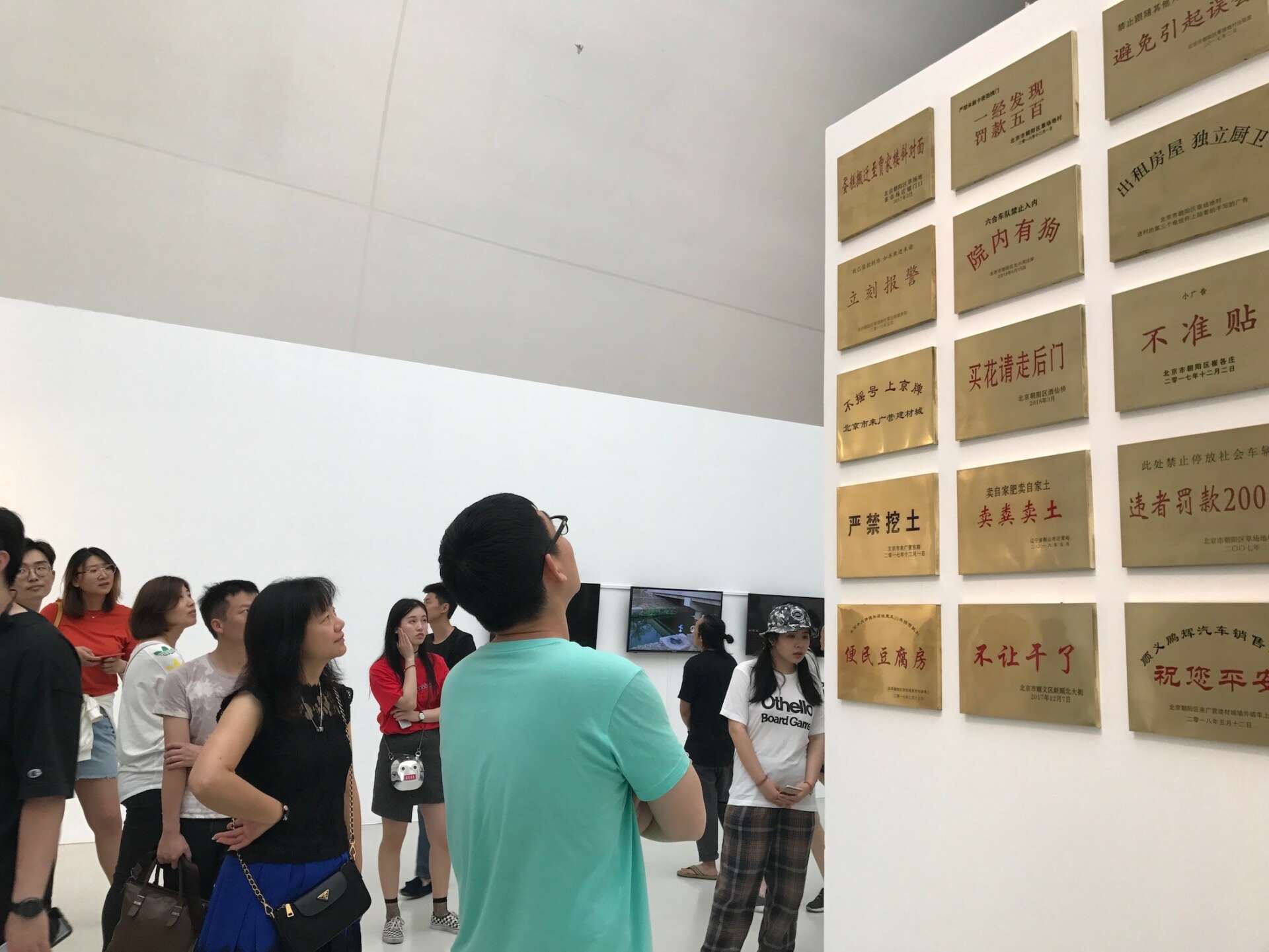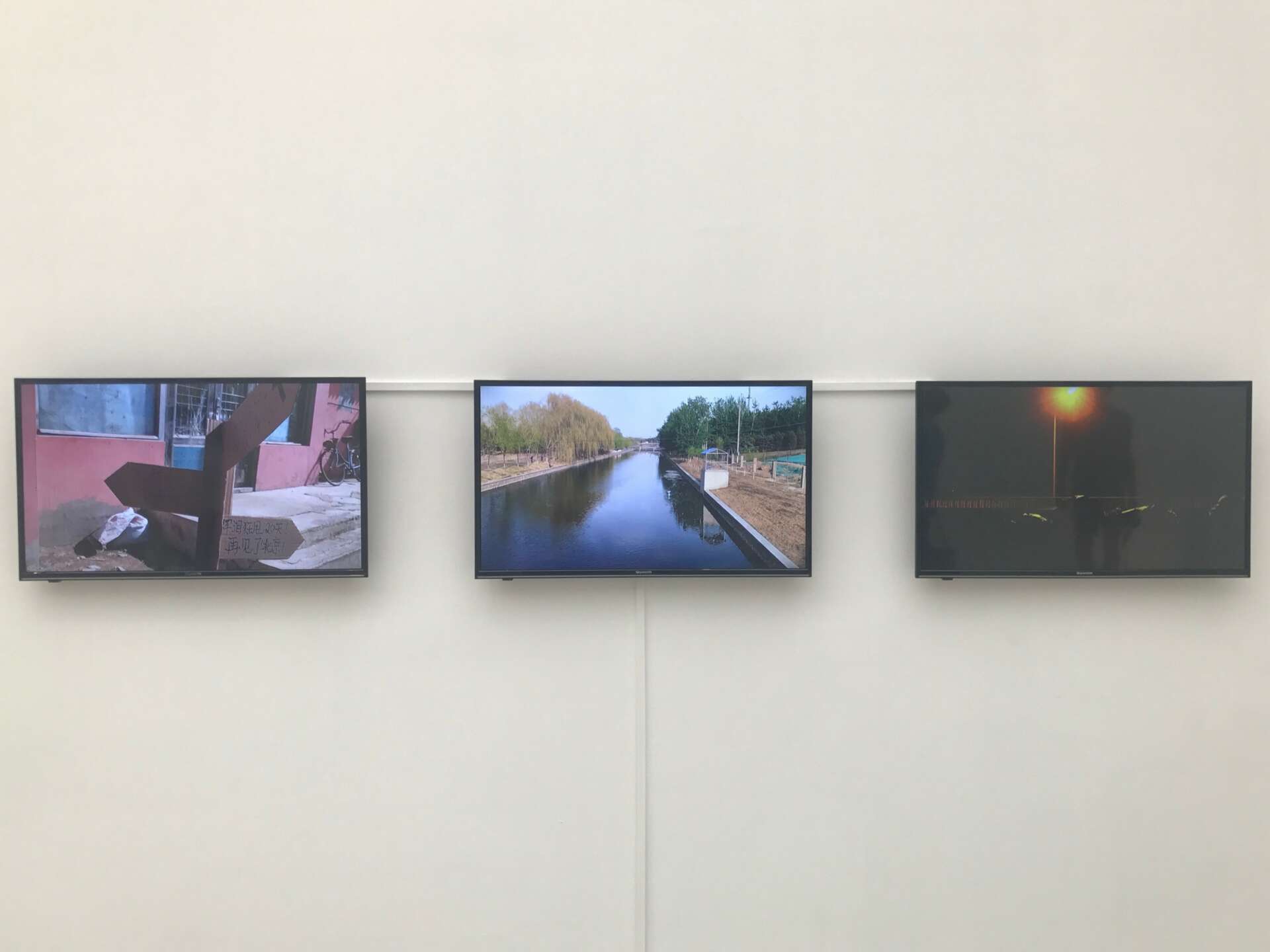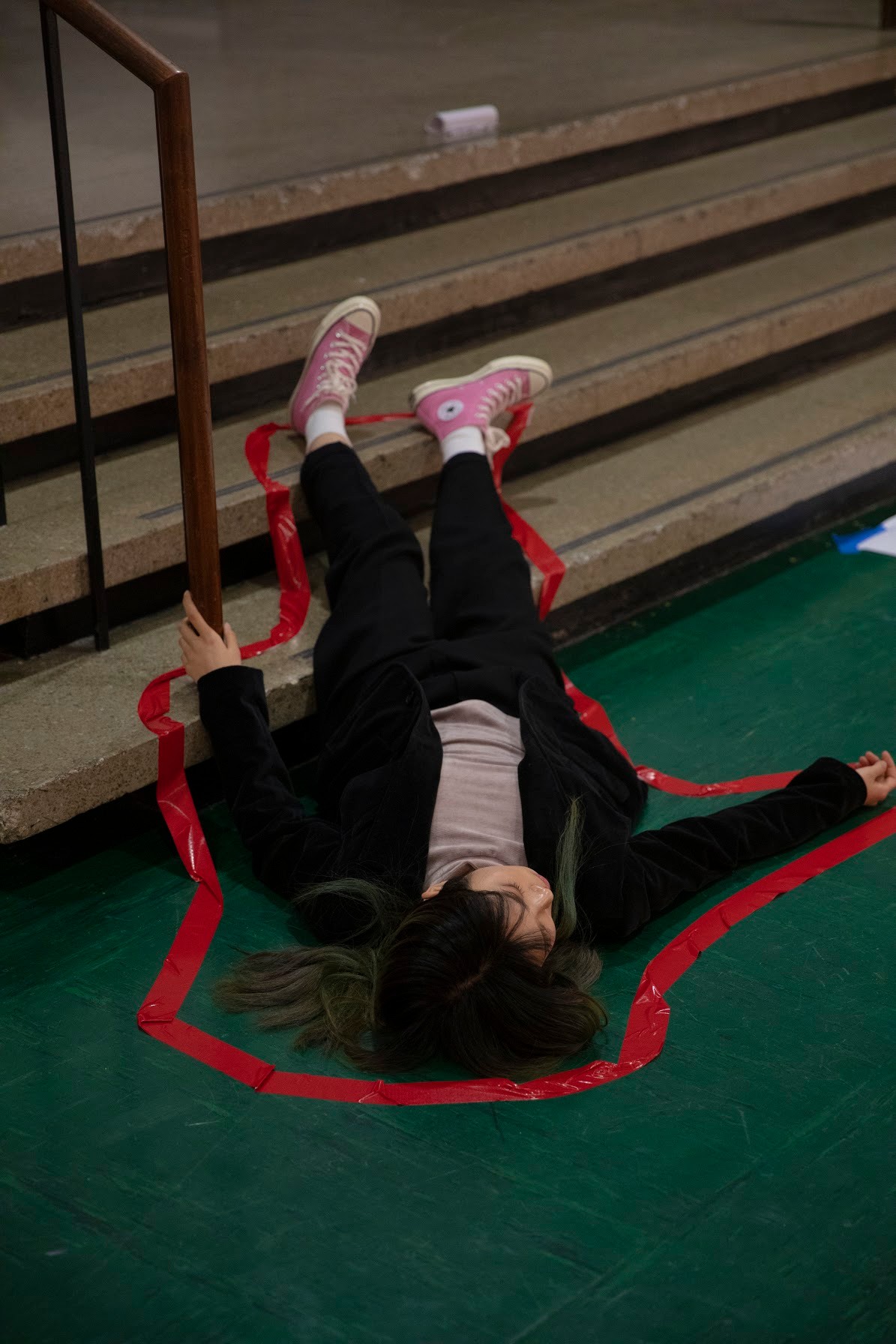We’re excited to introduce you to the always interesting and insightful Ruohan Li. We hope you’ll enjoy our conversation with Ruohan below.
Alright, Ruohan thanks for taking the time to share your stories and insights with us today. What’s been the most meaningful project you’ve worked on?
I made a video art and a readymade in 2018 inspired by what happened in Beijing at the end of 2017. The former is called “Vagrant Signpost”, and the latter is “Award You!”. Beijing is an international metropolis with an extremely high population, facing housing shortage, wage imbalance, gap of wealth and a series of social issues. The population in 2016 got over 21.95 million including 807 million external population and reached the historical peak. The majority of the external population actually work as cheap labor who are impossible to obtain Beijing residence. They huddle in small and shabby dormitories in the suburbs of Beijing because they cannot afford the high rent in urban areas. At that time, there were so many “dormitories” for poor people, which actually had a huge safety hazard. But no one cared about safety when they even had to worry about their breakfast. In 2017, a big fire broke out in a crowded rental apartment building at the rural-urban fringe in Daxing, Beijing, which led to 19 deaths and 8 injuries. The accident happened as the warning of the intense contradiction between the economic imbalance and the density of population in a huge modern city. If the fire hadn’t happened, people would never know there were so many apartments like that around the city of Beijing. However, following the turning incident, what was even more frustrating was that some ruthless policies and regulations were released. The government of Beijing issued an order: Demolish the Apartments, Eliminate the Low-End Population! “Low-end Population” is a new name for the people who work as cheap labor; who live in those kinds of crude places; who don’t have Beijing residences. Everything then, ended up in tragedy. It could be the coldest winter for many people and families.
After hearing the news, I thought I should speak up for them. In my opinion, responding to social issues is the responsibility of artists. I can support them in my way, even though I was still a student whose voice might not be very strong. This was the inspiration and also my intention of the two works I made during that time. However, the intersection of the works is not only about having similar inspiration, but also including the concept of the folk text collection. After the order had been issued, tens of thousands of migrant workers lost their residence and had to leave Beijing. I visited many suburbs, trying to find clues and vestiges that they used to live there in the post-demolishment landscape. I found that almost every small business was closing following the decrease of the population of those areas. Their windows and doors were covered by lots of hand written posters and notices saying the news that they were leaving or moving to other places. Right beside their notices, I saw the big poster with well-printed characters which was apparently the official announcement about “Demolish the Apartments, Eliminate the Low-End Population!” This was the preliminary but most impressive process of how I created these two works. The text on those notices were the core material and the crucial part of them.
Discussing the social topic through the art language to me is the most thrilling way to react and to strike against reality. It also allows me to think deeply and thoroughly about the issue in a sober way. I enjoy the process of concepts being established and then overturned. I also enjoy the research that goes into it. Since then, I have become more concerned about a range of issues related to population mobility and urbanization in China.


Great, appreciate you sharing that with us. Before we ask you to share more of your insights, can you take a moment to introduce yourself and how you got to where you are today to our readers.
I’m Ruohan Li, a multimedia artist based in LA and Beijing. I’m very glad that I have the chance to tell my story on Canvas Rebel.
I was born in a small city, Anshan, in the northeast of China. I fell in love with painting when I was 6 and had kept on it since then for almost 20 years. when I was 15 years old, I went to an art high school in Beijing and stepped on my art road thoroughly. I may went on the “bad” track too early as a Chinese saying goes, i’m already on the pirate ship. I’ve been on the pirate ship of Art since I was a kid. For many years, I didn’t need to think deeply why I loved painting and should paint. However, during the time I was in my undergraduate school, CAFA, I found myself really enjoying going on adventures outside more than staying at the studio and painting all day. I love city-walk especially in suburbs of big cities to find out the shadow under the ornate surface. I love observing people living among the hustle and bustle and listening to the stories of individuals. Then I realized painting as the only art language I grasped might be too limited to respond what I experienced. It was time for me to step out of my comfort zone of traditional painting and to explore more. Starting from getting to know more material and media, I tried to make conceptual art by using video, ready-made, synthesis materials, mechanics, my body, etc. I chose material and ways to express according to the concept of works. Sometimes, I was inspired by special material and developed ideas based on that. I felt my way of thinking could be flexible and wide. The definition of art to me became way more broader to me.
Now, I’m here in LA. It’s a kind of magic to travel between cultures across the ocean and address myself in an unfamiliar country. After the three-year study in program of Film and Video of CalArts, I got to know more about the culture and the society here. I’m not only absorbing nutrient from another soil, but I can also look back to my culture and even the entire human society through another lens, which is broader and more pluralistic.


Is there a mission driving your creative journey?
I believe that the goal changes in different step of the life. As how I introduced myself, I went on the art journey because of my passion for it when i was a kid. So, art naturally became a big part of me, which was instilled in my blood. At the same time as I was creating art, I felt that art was also molding me into a better person. So before college, I would say I was just simply following my heart. I insisted because I liked.
During my time in CAFA, the goal or mission actually became to the social responsibility following that I explored the society more and deeper, which provided the stronger motivation and inexhaustible energy. I’m still fond of the art language. But at the same time, the words I desired to express were getting conceptual with stronger personal perspective. I gradually realized that art made me face the world genuinely. No matter how terrible the world is and how bad my life is, I always believe that art is the pure land in my heart.
Now as a Chinese artist living in the United States, I use the perspective of my generation to excavate personal memories and emotions in the context of the vast Chinese cultural background and the conditions of Chinese society. At the same time, I’m trying to experience as much as possible in US society. I focus on the comparative study of Eastern and Western cultures, looking for different sources and presenting the power of cultural collision and the beauty of diversity to the audience.

What do you find most rewarding about being a creative?
As I said, art made me genuine to the world, which presents in the way of observation to the world and the attitude of responding to the world. It makes me always stay sensitive and sober. Instead of weaseling out and being dull, I draw the courage from art to fight to the end. Art also teaches me the way of thinking in a certain sense of order. In my opinion, making art is both rational and emotional. Through the perceptual capability art cultivates, I perceive the world clearly and nimbly based on emotion. And then led by rationality, I translate my feelings into concepts and look for precise materials and the way of expression which could convey the concept best to the audience.

Contact Info:
- Website: https://ruohanli.com
- Instagram: https://www.instagram.com/lucida07/
- Other: vimeo: https://vimeo.com/ruohanli
Image Credits
Presley Yang, Areon Mobasher


